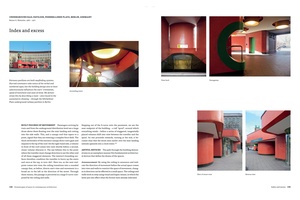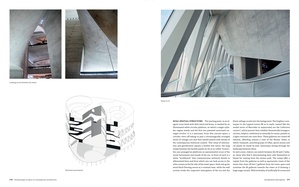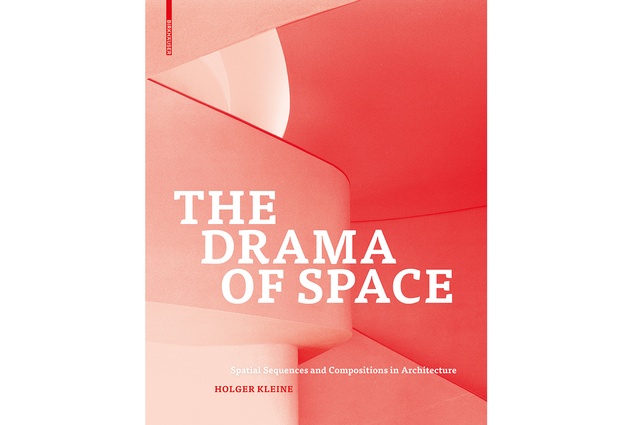Book review: The Drama of Space
Andrew Barrie discusses this book, which explores a systematic approach to thinking about space based on dramaturgy.
The Drama of Space: Spatial Sequences and Compositions in Architecture
By Holger Kleine, published by Birkhäuser
I was thinking about Claude Megson as I read this book. It was, in part, because that morning I had visited the Wong House, one of Megson’s late-1960s’ residential masterworks. Composed as a series of cubes cascading down a hillside in Remuera, Auckland, the house provides dramatic sequences of space: a compressed, double-height dining area opening to a broad living room; vertiginous staircases diving between levels; compressed sideways connections out to leafy courtyards; and top-lights and snug corners.
Both that house and this book – The Drama of Space, subtitled Spatial Sequences and Compositions in Architecture – called to mind a course Megson taught at the University of Auckland’s School of Architecture in the 1980s called ‘Composition, Scale and Proportion’. Megson’s lectures ran through the full historical range of approaches, from Palladio’s A-B-A rhythms to Le Corbusier’s Modulor proportion system to the Dutch monk Hans van der Laan’s mid-20th-century theories about numerical ratios.

Megson’s fascination with systems and rules was a key part of his modernist pedigree. The modern master Le Corbusier, who, in many ways, had sought to cast aside tradition, maintained important continuities by explicitly drawing aspects of the classical proportion systems into his architecture and, later, established his own proportion systems.
The enthusiasm with which many late modernists – think of Philip Johnson, James Stirling, Arata Isozaki or our own Miles Warren – embraced porticos and pediments in the 1980s similarly signalled that their love of the ‘shock of the new’ was moderated by deeply embedded classical instincts.
The assumption that architects might share methodologies or have common rules – a link that stretches from po-mo back through modernism, eclecticism and the Renaissance to classical antiquity – has faded only fairly recently. Of the critiques that might now be made of a contemporary building, improper application of the golden proportion is unlikely to be among them.
Now, what we seem to prize most is an architect’s distinctiveness – witness, for example, the way Shigeru Ban’s clever pioneering of cardboard tubes as a material has not been picked up by a single other architect.
So, in developing a systematic approach, the author of The Drama of Space is proposing a way of thinking about architecture that has rather disappeared from view. Author Holger Kleine’s approach is based on the notion of ‘dramaturgy’. In normal usage, dramaturgy refers to the theory and practice of dramatic composition – an entirely sensible notion to apply to buildings.

The book is divided into four sections. The first analyses three Scuole Grandi – the grand, renaissance-era buildings for associations of Christian laity in Venice – to establish the basic principles of his dramaturgy of space. Key aspects of the three buildings – spatial forms and sequences, configurations of floors, walls and ceilings, views, and so on – are subjected to comparison and analysis.
The second section examines the arts of theatre, film and music – arts in which dramaturgy or ‘setting the stage’ is a key component – and traces notions of spatial drama through the history of architectural writing from Vitruvius to Le Corbusier. The ideas extracted from the Venetian interiors are then demonstrated in a large number of contemporary buildings, ranging from Peter Zumthor’s baths in Vals to Koolhaas’ Illinois Institute of Technology Campus Center in Chicago. This analysis, accompanied by clear exploded axonometric drawings to illustrate the spatial composition of each, reveals their wildly varying dramaturgies.
The final section is a systematic taxonomy of the elements of spatial dramaturgy, which might serve as either design tool or dictionary.
Megson would, I think, have liked this book – he professed admiration for systematic approaches. However, as recent writing on Megson has demonstrated, such systems are hard to discern in his own work. Similarly, he liked his students to understand the systems of composition, scale and proportion, but didn’t ever require them to use them in their designs.
It is likely that, while Megson may have admired the intention of semantic and geometric systems, his approach was instinct, not system. In this way, he may have been more aligned with contemporary thinking than he would have liked to admit. Kleine’s book is also, perhaps, best as a way of honing our instincts rather than of regulating our behaviour.
This article first appeared in Architecture New Zealand magazine













